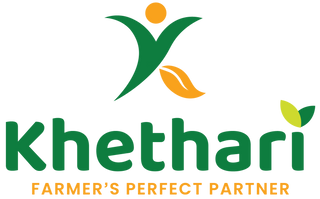
IoT for Real-Time Farm Monitoring: Transforming Agriculture
In today’s fast-changing agricultural landscape, farmers are looking for smarter, more efficient, and sustainable ways to manage their farms. This is where Internet of Things (IoT) technology steps in as a game-changer. IoT enables farmers to monitor their fields, crops, soil, and livestock in real-time, helping them make informed decisions that boost productivity and reduce costs.
What is IoT in Agriculture?
IoT in agriculture refers to the use of smart sensors, devices, and software connected through the internet to collect and analyze real-time data from farms. This data provides valuable insights on soil moisture, crop health, weather patterns, pest activity, and even irrigation needs.
Benefits of IoT for Real-Time Farm Monitoring
1. Precision Farming
IoT sensors track soil health, nutrient levels, and crop conditions, ensuring that inputs like fertilizers, pesticides, and water are used precisely where and when they are needed. This reduces wastage and increases yield.
2. Efficient Water Management
Smart irrigation systems connected with IoT automatically adjust water supply based on soil moisture levels and weather forecasts. This ensures water conservation while maintaining healthy crop growth.
3. Pest and Disease Detection
IoT devices can detect early signs of pest attacks or crop diseases, enabling farmers to take timely preventive measures and minimize crop losses.
4. Weather Forecasting & Alerts
With IoT-enabled weather stations, farmers can receive accurate forecasts and alerts about rainfall, temperature changes, or extreme weather events, helping them protect their crops.
5. Livestock Monitoring
Wearable IoT devices can monitor the health, location, and activity of livestock, reducing risks and improving farm management efficiency.
Applications of IoT in Agriculture
- Smart Irrigation Systems – Automating water supply based on soil and weather data.
- Soil & Crop Monitoring Sensors – Tracking soil nutrients, pH, and crop health.
- Greenhouse Automation – Controlling temperature, humidity, and lighting.
- Drones & Remote Imaging – Capturing aerial data for better decision-making.
- Supply Chain Monitoring – Ensuring freshness and traceability of produce.
Why Farmers Should Adopt IoT
Adopting IoT in farming means higher yields, reduced costs, sustainable resource use, and timely decision-making. In a competitive market, farmers who embrace smart farming technologies gain a significant advantage.
Conclusion
IoT is no longer the future of agriculture—it is the present reality. Real-time farm monitoring powered by IoT is helping farmers overcome challenges like resource wastage, unpredictable weather, and pest attacks. By investing in IoT solutions, farmers can secure their harvests, increase profitability, and contribute to sustainable farming practices.
